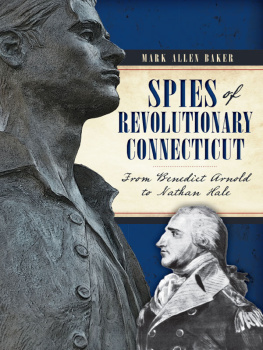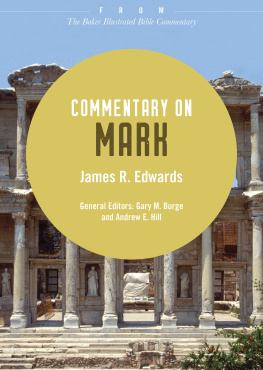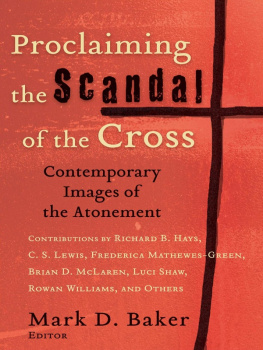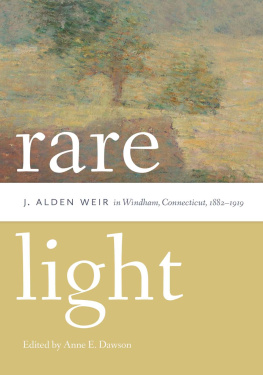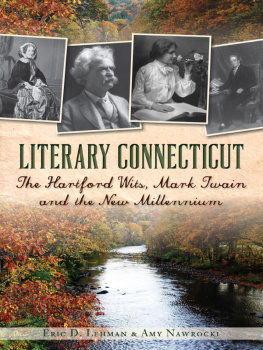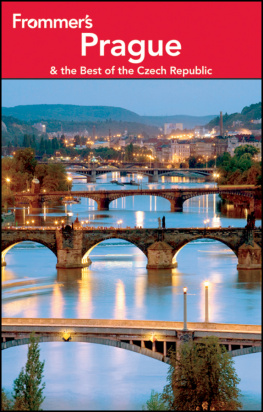Mark Allen Baker - Connecticut In World War II
Here you can read online Mark Allen Baker - Connecticut In World War II full text of the book (entire story) in english for free. Download pdf and epub, get meaning, cover and reviews about this ebook. year: 2017, publisher: Arcadia Publishing, genre: History. Description of the work, (preface) as well as reviews are available. Best literature library LitArk.com created for fans of good reading and offers a wide selection of genres:
Romance novel
Science fiction
Adventure
Detective
Science
History
Home and family
Prose
Art
Politics
Computer
Non-fiction
Religion
Business
Children
Humor
Choose a favorite category and find really read worthwhile books. Enjoy immersion in the world of imagination, feel the emotions of the characters or learn something new for yourself, make an fascinating discovery.

- Book:Connecticut In World War II
- Author:
- Publisher:Arcadia Publishing
- Genre:
- Year:2017
- Rating:3 / 5
- Favourites:Add to favourites
- Your mark:
- 60
- 1
- 2
- 3
- 4
- 5
Connecticut In World War II: summary, description and annotation
We offer to read an annotation, description, summary or preface (depends on what the author of the book "Connecticut In World War II" wrote himself). If you haven't found the necessary information about the book — write in the comments, we will try to find it.
Connecticut In World War II — read online for free the complete book (whole text) full work
Below is the text of the book, divided by pages. System saving the place of the last page read, allows you to conveniently read the book "Connecticut In World War II" online for free, without having to search again every time where you left off. Put a bookmark, and you can go to the page where you finished reading at any time.
Font size:
Interval:
Bookmark:

IMAGES
of America
CONNECTICUT IN
WORLD WAR II

DECEMBER 7, 1941, AMERICAN NAVAL BASE AT PEARL HARBOR. Hundreds of Japanese fighter planes attacked the American naval base at Pearl Harbor near Honolulu, Hawaii, just before 8:00 a.m. on December 7, 1941. And with it, life in America would change forever. The devastating barrage lasted just two hours but managed to destroy nearly 20 American naval vessels, including the USS Arizona, pictured here, and more than 300 airplanes. (Courtesy of the Library of Congress, LC-USZ62-104778.)
ON THE COVER: From propellers produced by Hamilton Standard to engines invented by Pratt & Whitney, Connecticut ingenuity was on display throughout World War II. Pictured here are factory workers from another pivotal manufacturer, the Vought-Sikorsky Aircraft Corporation. In 1939, United Aircraft moved Vought to Stratford, where its Sikorsky division was located, and renamed the merged divisions Vought-Sikorsky Aircraft. (Courtesy of the Library of Congress, LC-DIG-fsa-8a34623.)
IMAGES
of America
CONNECTICUT IN
WORLD WAR II
Mark Allen Baker

Copyright 2017 by Mark Allen Baker
ISBN 978-1-4671-2698-4
Ebook ISBN 9781439663264
Published by Arcadia Publishing
Charleston, South Carolina
Library of Congress Control Number: 2017939252
For all general information, please contact Arcadia Publishing:
Telephone 843-853-2070
Fax 843-853-0044
E-mail
For customer service and orders:
Toll-Free 1-888-313-2665
Visit us on the Internet at www.arcadiapublishing.com
To Ann and Mark Lepkowski, thank you for your enduring friendship.
CONTENTS
ACKNOWLEDGMENTS
To Erin L. Vosgien, Arcadia Publishing acquisitions editor, and Henry Clougherty, Arcadia Publishing title manager, I am grateful for this opportunity.
I wish to extend my gratitude to the following Connecticut institutions: Hartford Circus Fire Memorial committee members, New England Air Museum, Connecticut Historical Society (Hartford), and the Hartford Courant. I would also like to acknowledge Marilyn Allen Baker and the family of Dennis DiGiovanni for their contributions.
Books, like the one in your hand, are possible because of the Library of Congress and its wonderful staff, who assisted me specifically on the material found in Farm Security Administration/Office of War Information collection and the Historic American Engineering Record. You are encouraged to visit the archive for a rare view of life during World War II. Every effort has been made to conform to the rights and restrictions on every image that appears in this publication. In the event of a discrepancy due to mislabeling, please contact us immediately. Although the people, places, and things of the period are firmly etched into our mindset, the ambiguous nature of public domain makes it necessary for us to promulgate the disclaimer: All registered trademarks that appear inside this publication are the property of their respective corporations. Also a word of acknowledgement to the National Archives, Smithsonian Institution, US Census Bureau, US Office of Emergency Management, US Mint, US Postal Service, and US Department of War.
All this being said, we are not a perfect society. Poorly documented during this period were the struggles by minorities and their achievements. Thankfully, some have come into the spotlight, such as the Tuskegee Airmenthe first African American military aviators in the US armed forcesbut more needs to be done. Also casting a variegated cloud over the period was the silhouette of an enemy we did not understand and, thus, shameful actions such as Executive Order 9066. This act, signed by Pres. Franklin Roosevelt on February 19, 1942, forced the internment of over 100,000 residents of Japanese ancestry, 77,000 of whom were American citizens.
Unless otherwise noted, all images appear courtesy of the Library of Congress and an insert reference number often beginning with LC, DIG, US, or a control number may appear in parentheses following some captions. In nearly every situation, a digital file from the original negative was used.
To my friends and family, especially my wife, Alison, I appreciate your love and support.
INTRODUCTION
Since the beginning of our American history we have been engaged in change, in a perpetual, peaceful revolution, a revolution which goes on steadily, quietly, adjusting itself to changing conditions without the concentration camp or the quicklime in the ditch. The world order which we seek is the cooperation of free countries, working together in a friendly, civilized society. This nation has placed its destiny in the hands and heads and hearts of its millions of free men and women, and its faith in freedom under the guidance of God. Freedom means the supremacy of human rights everywhere. Our support goes to those who struggle to gain those rights and keep them. Our strength is our unity of purpose. To that high concept there can be no end save victory.
Franklin D. Roosevelt, Annual Message to Congress, January 6, 1941
These words rang out across the state of Connecticut, from the counties of Litchfield, Hartford, Tolland, and Windham to Fairfield, New Haven, Middlesex, and New London. From the dreams of our forefathers, many who forged this great nation from the very soil beneath our feet, we gathered strength before polishing it in unity.
Americans live in a world founded on four essential freedoms, as President Roosevelt so eloquently expounded in his message to Congress: The first was freedom of speech and expression everywhere in the world; the second the freedom of every person to worship God in his own wayeverywhere in the world; the third a freedom from wantwhich, translated into world terms, means economic understandings which will secure to every nation a healthy peacetime life for its inhabitantseverywhere in the world; and finally, the freedom from fearwhich, translated into world terms, means a world-wide reduction of armaments to such a point and in such a thorough fashion that no nation will be in a position to commit an act of physical aggression against any neighbor anywhere in the world. It was these remarks that resonated in the hearts of a nation and the souls of our state.
And although Americans could hear the words, they could not see them. That required an artists rendition. Seventy-two miles northwest of Hartford, Connecticut, Norman Perceval Rockwell, an illustrator for a popular publication, the Saturday Evening Post, put brush to canvas in his Stockbridge, Massachusetts, studio and painted our reflection. The empathetic images, which were first published on February 20, February 27, March 6, and March 13, 1943, along with commissioned essays from leading American writers and historians (Booth Tarkington, Will Durant, Carlos Bulosan, and Stephen Vincent Bent), featured modelsmany Rockwells neighborsthat struck a patriotic chord. The series became so popular following publication that the magazine received millions of reprint requests. The images were pinned to every bedroom wall in Bloomfield and every garage in Glastonbury, or so it appeared.
And it was these four indispensable rights that resonated from the people, places, and things associated with Connecticut in World War II.
Pres. Warren Harding died in office on August 2, 1923, and was succeeded by his Republican vice president, Calvin Coolidge (19231929). Herbert Hoover, also a Republican, took over on March 4, 1929, and served a single term before handing Democrat Franklin Roosevelt (19331945) a country at the nadir of the worst depression in its history. And, as if that alone were not enough, along came the attack on Pearl Harbor and World War II. Vice Pres. Harry S. Truman (19451953) succeeded to the office of the president of the United States following Roosevelts death on April 12, 1945.
Next pageFont size:
Interval:
Bookmark:
Similar books «Connecticut In World War II»
Look at similar books to Connecticut In World War II. We have selected literature similar in name and meaning in the hope of providing readers with more options to find new, interesting, not yet read works.
Discussion, reviews of the book Connecticut In World War II and just readers' own opinions. Leave your comments, write what you think about the work, its meaning or the main characters. Specify what exactly you liked and what you didn't like, and why you think so.

